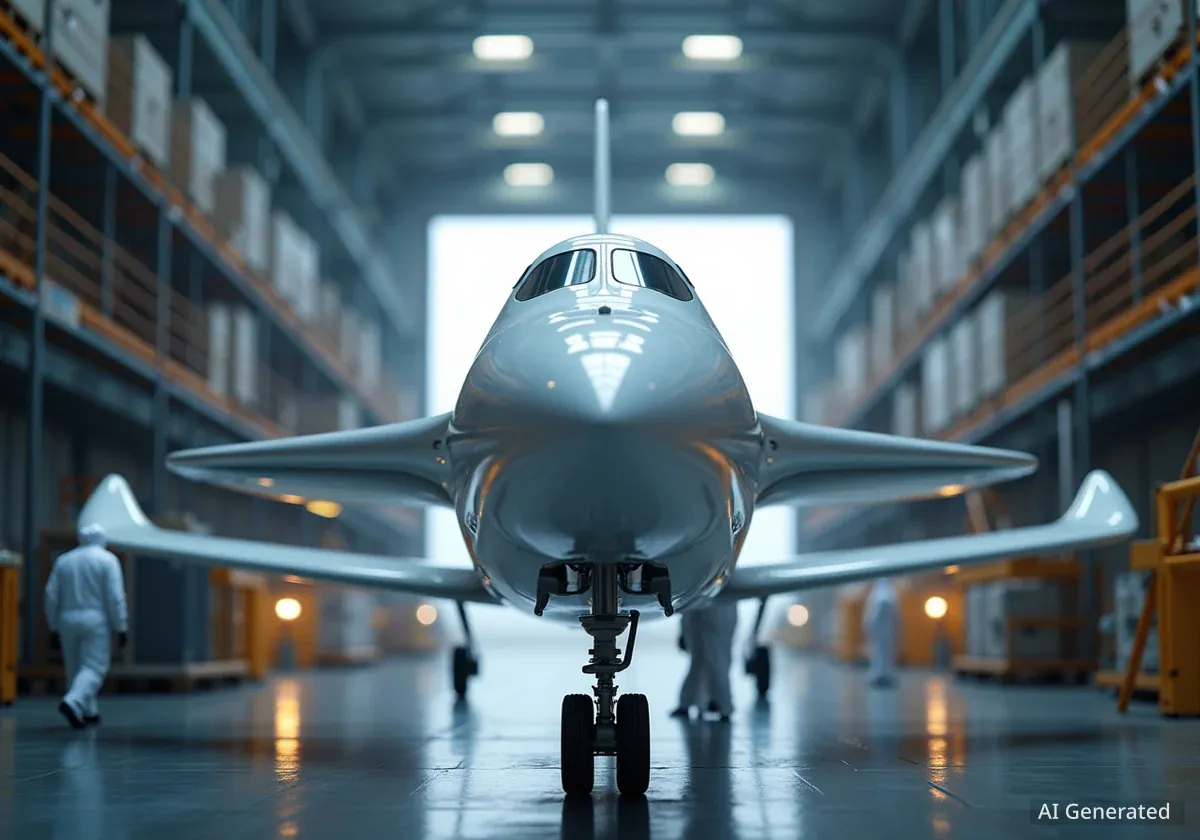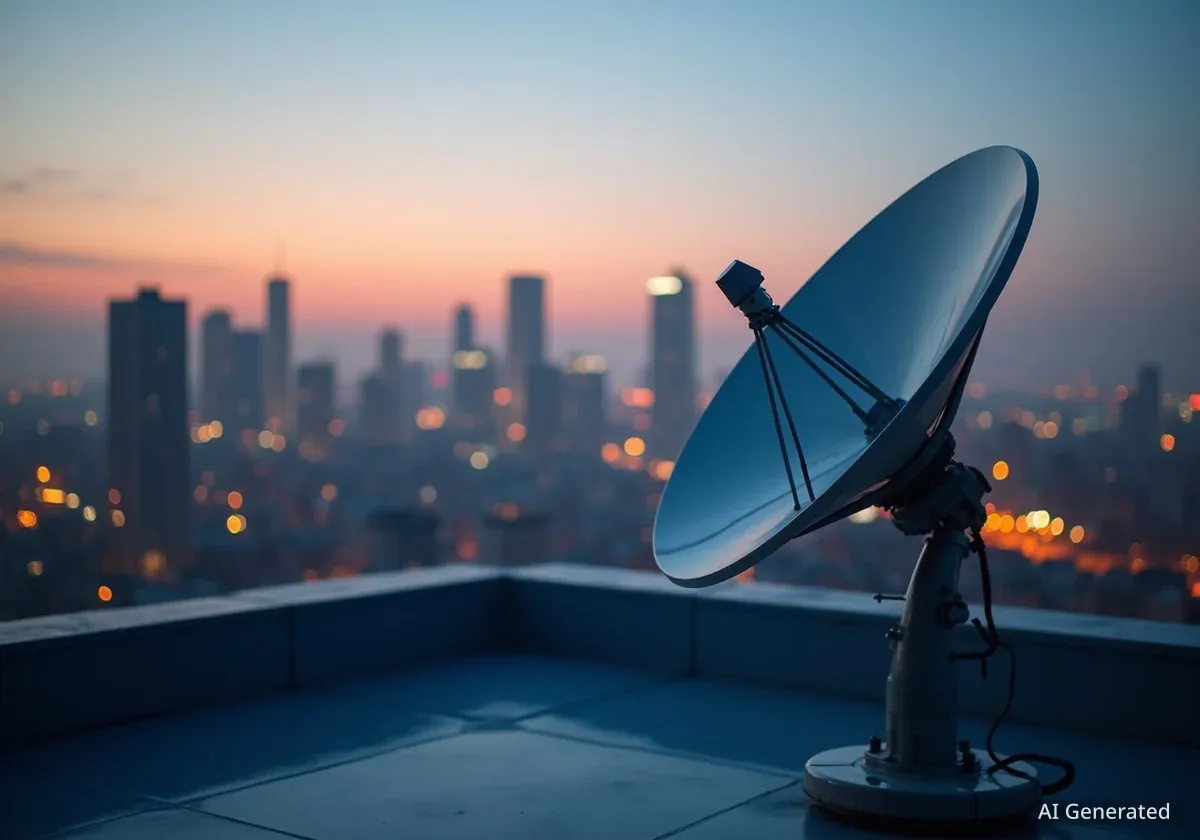NASA and Sierra Space have officially renegotiated their Commercial Resupply Services (CRS-2) contract, altering the plan for the Dream Chaser spaceplane's inaugural orbital flight. The mission, now scheduled for 2026, will proceed as an independent flight rather than a cargo delivery to the International Space Station (ISS) as originally intended.
This significant change in the mission profile follows a series of technical delays and a strategic shift in program priorities for the reusable spacecraft.
Key Takeaways
- The first orbital flight of Sierra Space's Dream Chaser is now a "free flier" mission set for 2026.
- The debut flight will no longer travel to the International Space Station (ISS).
- The change stems from a renegotiated CRS-2 contract between NASA and Sierra Space.
- Technical challenges with the spaceplane's complex propulsion system contributed to schedule delays and the mission change.
- Sierra Space is positioning Dream Chaser for diverse missions, including national security applications.
Contract Revision for Debut Flight
The original CRS-2 contract, awarded to Sierra Space in 2016, required the company to conduct a minimum of seven cargo resupply missions to the International Space Station. These missions were planned using the Dream Chaser spaceplane paired with its expendable Shooting Star cargo module.
However, the newly revised agreement allows the first flight to serve as a demonstration of the spacecraft's capabilities in orbit without the added complexity of docking with the ISS. This independent mission will validate the vehicle's performance in a real-world space environment before it undertakes more complex operational tasks.
Background on the CRS-2 Contract
NASA's Commercial Resupply Services 2 (CRS-2) contracts are a cornerstone of the agency's strategy for maintaining operations on the International Space Station. By partnering with commercial companies like Sierra Space, SpaceX, and Northrop Grumman, NASA can outsource the delivery of cargo, science experiments, and supplies, fostering a competitive commercial space economy while focusing on deep space exploration.
Technical Challenges and Program Delays
A primary factor behind the mission's restructuring has been the technical complexity of the Dream Chaser's advanced propulsion system. The system's design has presented significant challenges, leading to schedule setbacks and delays in securing the necessary certifications for ISS operations.
The propulsion system is engineered for high performance and versatility. It is capable of switching between different thrust levels by using hydrogen peroxide as a monopropellant for low-thrust maneuvers and combining it with RP-1 fuel for high-thrust burns. While innovative, perfecting this system has proven more time-consuming than initially projected.
A Versatile Propulsion System
The Dream Chaser's unique ability to transition between low, medium, and high thrust modes is designed to give it exceptional maneuverability in orbit. This flexibility is crucial for a range of potential missions, from gentle docking procedures to rapid orbital adjustments.
A New Mission Focus: National Security
The shift to a free-flier mission also aligns with Sierra Space's broader strategy to position the Dream Chaser for a variety of mission profiles beyond ISS resupply. The company sees significant potential for the spaceplane in the defense and national security sectors.
Fatih Ozmen, Executive Chair at Sierra Space, highlighted this strategic direction in a recent statement.
“Dream Chaser represents the future of versatile space transportation and mission flexibility. This transition provides unique capabilities to meet the needs of diverse mission profiles, including emerging and existential threats and national security priorities that align with our acceleration into the Defense Tech market.”
This pivot suggests that while the partnership with NASA remains critical, Sierra Space is actively developing the Dream Chaser as a multi-purpose national asset capable of serving government and commercial clients with varying needs.
The Future of Dream Chaser
By conducting the first flight as an independent mission, Sierra Space and NASA can gather essential flight data and verify the spaceplane's performance without the immediate pressure of an ISS rendezvous. This approach mitigates risk and allows engineers to address any unforeseen issues before committing to critical cargo missions.
The long-term vision for Dream Chaser remains ambitious. Its ability to land on conventional runways, similar to the Space Shuttle, offers a significant advantage for returning sensitive scientific experiments and cargo to Earth with minimal G-forces.
In his statement, Ozmen emphasized the collaborative goal of this new plan. “Together with NASA, we are seeking to preserve the exceptional potential of Dream Chaser as a national asset,” he said, “ensuring its readiness for the next era of space innovation.” This revised debut mission is a crucial step toward realizing that potential, paving the way for future ISS missions and a wider range of applications in the years to come.





